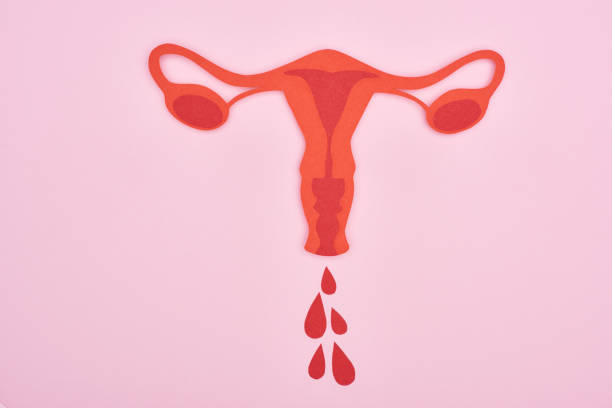Around 5% of women around the world are diagnosed with one or more of the symptoms of pelvic inflammatory disease.
Pelvic inflammatory disease is an infectious disease affecting the upper female reproductive system including tubes, uterus, and ovaries.

Pelvic inflammatory disease symptoms
Mild to moderate pain in the pelvic area
When you feel constant, tolerable pain that increases with time to the point that it makes you walk in a crooked manner or you are unable to walk at all.
Here you must stop taking painkillers and go to the doctor.
It is normal to have pelvic pain during pregnancy.
Pain or discomfort during urination
Feeling pain during urination and the need to urinate continuously, while not feeling the bladder empty or not feeling comfortable after urination.
It is also possible to feel some burning during urination.
However this could be a symptom of urinary tract infections, so to rule out this possibility, a urine analysis can be done in the laboratory to confirm the reason.
Pain during sexual intercourse
One of PID complications is scars in the fallopian tubes and pelvic organs which causes pain during intercourse.
Another complication is an abscess (collection of bus) which could happen to any part of reproductive organs: fallopian tubes, ovaries, and even the uterus.
When you have an abscess in your hand you can't stand the pain.
Here you can imagine the pain of sexual intercourse with a tract full of buses which if not treated could become a matter of life or death.
Unusual vaginal discharge with unusual color and odor:
In a healthy woman, there are beneficial bacteria in the vagina that secretes clear, odorless secretions.
They maintain vaginal moisture that keeps the vagina clean and maintains a certain pH that enables it to resist any infection.
When the infection enters the vagina without being able to resist, the nature of the secretions changes, which is then the result of harmful bacteria present in the vagina.
The vaginal discharge becomes colored white, yellow, or even green, with an unpleasant odor.

Bleeding between periods
The menstrual cycle starts from the first day of the period to the day before the next period.
We can say that the duration of the cycle in normal people ranges from 23 to 35 days, but 28 days are common.
If you leave PID not treated the infection may reach the uterus and affect lining cells inside the uterus.
These cells shed during menstruation, and the uterus due to this inflammation changes the way he gets rid of them and gets rid of them faster and in shorter periods.
Bleeding during or after sexual intercourse
As we explained, PID causes inflammation along the reproductive organs, and this inflammation causes bleeding during sexual intercourse.
Heavy periods
How do you know you have menstrual bleeding? when you need to change your pad or sanitary product more than often.
if you need to use more than one sanitary product, and if you bleed through your pad and your clothes.
Also if you can't participate in any activity, feeling ill always with short breath, and If you notice any of these symptoms you know you have a heavy period.
Mild to moderate fever
If your body temperature increases to 83.3 and above continuously stop taking antipyretics and see your doctor.
Severe pain during ovulation and period
Pain is a normal symptom, it may last for 3 days and can be controlled by pain relievers and worm paths.
But in PID presence of scars in fallopian tubes, ovaries, and other reproductive organs causes severe unbearable pain during the period and ovulation lasts all period and ovulation time.
These symptoms are not specific to pelvic inflammatory disease symptoms as most women are not aware of the existence of the disease due to the lightness of the symptoms and the absence of a special test for the disease, but the diagnosis is made based on the symptoms and the patient’s complaint.
Also, the presence of pain and discomfort during the examination of the patient may be a symptom of pelvic inflammatory disease symptoms.
The doctor can recommend a swab, but unfortunately, a negative swab does not mean that the disease is not present.
Causes of pelvic inflammatory disease (PID)
Sexually transmitted like chlamydia and gonorrhea, Mycoplasma genitalium.
Sometimes bacteria are normally found in the vagina.
Any previous surgical intervention such as insertion of intrauterine device, dilation and curettage, and abortion.
Some medical cases in the pelvic area such as appendix rupture and gastroenteritis.
Are there pelvic inflammatory disease risk factors?
If you have a previous pelvic inflammatory disease, or the presence or history of previous sexually transmitted disease.
The presence of Bacterial vaginosis
Age less than 35 years.
First 3 weeks after intrauterine device insertion, and the presence of risk factors of gonorrheal or chlamydial infection.
How is pelvic inflammatory disease diagnosed (PID)?
Medical history.
Pelvic inflammatory disease symptoms and signs if you suffer from one or more of them.
Pelvic examination.
Pregnancy test.
Blood and urine test.
Ultrasound(transvaginal ultrasound).
Endometrial biopsy.
Treatment of pelvic inflammatory disease (PID):
Antibiotics
Start antibiotics immediately after diagnosis, antibiotic treatment usually occurs by combining more than one type and usually lasts for no less than 14 days.
You must complete your course even if you feel better after a few days.
Partner treatment
Your sex partner should be treated also even if he doesn't have any symptoms.
You must stop having sex until both of you have completed your treatment course and feel better
IUD removal
Hospitalization and surgery
In severe cases, unresponsive to treatment, abscesses, uncertain diagnosis, and pregnant women.
Finally, pelvic inflammatory disease symptoms occur often mildly and are easily treated, but neglecting them can lead to serious complications that may lead to infertility.
so, when you feel any pain in the pelvic area, during urination, during or after sex, bleeding during or between periods, heavy periods, fever and any unusual vaginal discharge go to the doctor as soon as possible.


You must be logged in to post a comment.